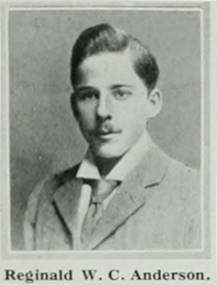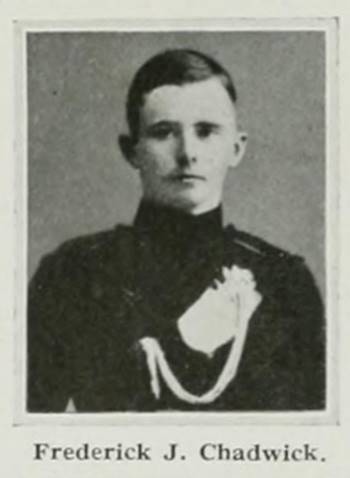This article is about De Ruvigny’s Roll of Honour, an important source of information if you are looking for a British armed forces casualty of the First World War. This guide is divided into three parts which cover the history of De Ruvigny’s Roll of Honour, how you can view the volumes and what type of information the entries contain. Bond of Sacrifice is a similar work which focuses on officer casualties between August 1914 and June 1915. I have also created other guides to researching those who served in the British Army during the war:
De Ruvigny’s Roll Of Honour
An important source of information to consult when researching a British or Commonwealth casualty of the First World War is De Ruvigny’s Roll of Honour, or to give the book its full title The Roll of Honour: A Biographical Record of all Members of His Majesty’s Naval and Military Forces who have Fallen in the War by the Marquis de Ruvigny. Due to the scale of the casualties, de Ruvigny wasn’t able to complete his work but still produced five volumes which covered over 25,000 casualties. This was an epic undertaking for the period and the volumes also include over 7,000 photographs. There was no charge to the family of those who died to appear in the books. Part of the preface is quoted below which sets out the purpose of the books and explains the type of information included:
The purpose of the Roll of Honour is to place on permanent record the name of every officer, non-commissioned officer and man of His Majesty’s Forces, on land or sea, who is killed in action, who dies of wounds, or whose death is otherwise resulting from the present war. The work is to be issued in a series of volumes, and the arrangement is alphabetical.
The name, rank and regiment of everyone whose name appears in the official casualty lists are included and where details have been obtainable, the parentage, place and date of birth, schools, a biographical sketch of career, and date of death, with extracts from letters of Commanding Officers or comrades relating to the action in which the officer or man fell, or to the particular circumstances of his death…
The present volume contains some 8,000 names, and deals with casualties during the first year of the war, though certain exceptions have been made in order that relatives, though killed at different periods, may be included together…
The three following volumes, which are at present in course of completion or preparation, will, it is hoped, be issued this year. These are the second and third volumes for 1914-15, and the first volume for 1916. It is earnestly hoped that relatives of those deceased in the service will, by furnishing particulars, co-operate in carrying out what is, even with the official facilities which are being given, an exceedingly difficult task.
How to find De Ruvigny’s Roll of Honour
De Ruvigny’s Roll of Honour has been digitized by both Ancestry and FindmyPast and if you already have a subscription then I would recommend searching on these sites. The link below will take you to FindmyPast which has a free trial period.
A couple of the volumes have also been digitized and are available to view and download for free online. Clicking on the links below will take you to books:
Roll of Honour Volume 1
Roll of Honour Volume 3
The Roll of Honour has also been reprinted by the Naval and Military Press.
What Information does De Ruvigny’s Roll of Honour Contain?
Entries in De Ruvigny’s Roll of Honour vary considerably, from a couple of lines to hundreds of words. You will find a mixture of the following information:
- Name
- Photograph
- Rank
- Regimental number
- Unit with a company sometimes recorded for infantry
- Date and cause of death
- Biographical information e.g. names of their parents, children, where they were born etc.
- Military decorations
- Letter from an officer sent to the family after their death
The casualties contained in the volumes usually run in chronological order, with Volume 1 covering those killed from 1914 and the final volume in 1918. However, earlier casualties do appear in later volumes so make sure you check those as well. De Ruvigny’s Roll of Honour was organised alphabetically so they don’t take long to search. There are a lot of errors in Roll of Honour so you should always try to cross-reference information with other sources. My guides on researching soldiers who served in the British Army will help you, with those on Soldiers Died in the Great War and medal records of particular use. Below are four examples which show the variety of information included. As you can see, the information regarding Robert Adam’s death is very important, as unless it was reported in a newspaper, you would likely have no other way of finding this out.
Adams, Francis Henry, Private, No.10349, 1st Battn. Coldstream Guards, s. of Edwin Adams, of New Barn, Stanton Fitzwarren, Highworth, Wilts; reported missing between 29 Oct. and 2nd Nov. 1914, and now assumed to have been killed in action in France between these dates.
Adams, Robert Job Rifleman, 17th Battn. (Poplar and Stepney Rifles) The London Regiment, s. of William George Adams, of 139, Green Street, Bethnal Green, China and Hardware Dealer, by his wife, Jane Sophia, dau. of Robert Orms; b. Bethnal Green, E., 19 Feb. 1895; edu. Bonner Street L.C.C. School, and became a clerk in the Wool Department of the Port of London Authority at the London Docks.
Having originally joined the Poplar and Stepney Rifles 14 April, 1910, he rejoined on 6 Aug. 1914, the day following the declaration of war, went to the Front with his regt., 17th County of London, and was killed in action at Le Philosophe, between 9 and 10 a.m. on the 11 June, 1915; umn.
His Company officer (Capt. J. Evans) wrote: “He was on sentry duty, and with great keenness was trying to locate a sniper who had been seen to move earlier in the morning, unfortunately too much of his head showed above the parapet which resulted in him being struck by a bullet believed to be an explosive one. I do hope this will be of some consolation to you to know that he played a man’s game and died a man’s death in the face of the enemy. Death was instantaneous with no suffering whatever”.
Adams was secretary of the Christian Endeavour Society of the Grove Road Baptist Chapel and was a good all-round athlete. He won his school prize for swimming at the age of eleven.
Anderson, Reginald William Christie, Private, No. S4, 070893, Army Service Corps, s. of Robert Anderson, of Fraserburgh, co. Aberdeen, Solicitor; b. Fraserburgh, 9 Nov. 1875; educ. Blair Lodge School, Polmont: enlisted 18 March, 1915, and d. of pneumonia in the Connaught Hospital, Aldershot, while going through his course of training. He m. Alvescot, co. Oxford, 9 Nov. 1901, Edith Elizabeth (The Warren, Carterton, Clainfield, S.O. Oxon.), only dau. of the late John Pearse, Fleet Engineer, R.N., and left two sons: Robert Pearse, b. 20 Feb. 1905, and John Christie, b. 3 Dec. 1908.
Chadwick, Frederick James, Capt., 104th Wellesley Rifles, Indian Army, eldest s, of the late Col. Edward Frederick Chadwick, 33rd (Duke of Wellington’s) Regt., by his wife Amy (Westfield, Dorchester), yst. dau. of the late Rev. Charles Torkington; b. Chetnole, co. Dorset, 31 Aug. 1883; educ. Connaught House, Weymouth, Cheltenham College and Royal Military College, Sandhurst; gazetted 2nd Lieut. 19 Aug. 1903 and attd. for a year to the 59th Foot, then stationed at Poona; was appointed to 104th Wellesley Rifles in Nov. 1904, being promoted Lieut. 19 Nov. 1905, and after serving with his regt. in the Mekran (gun-running) Expedition of 1911, Capt. 19 Aug. 1912.
He died of wounds received the same day while leading his machine gun section at the Battle of Shaiba, Mesopotamia, 13 April, 1915; buried at Shaiba; unm. Capt. Chadwick was mentioned in Despatches [published in India in Feb. 1915] “for gallantry,” and recommended for reward. His yst. brother, 2nd Lieut. R. M. Chadwick, died of wounds, 13 May, 1915 (see following notice).


